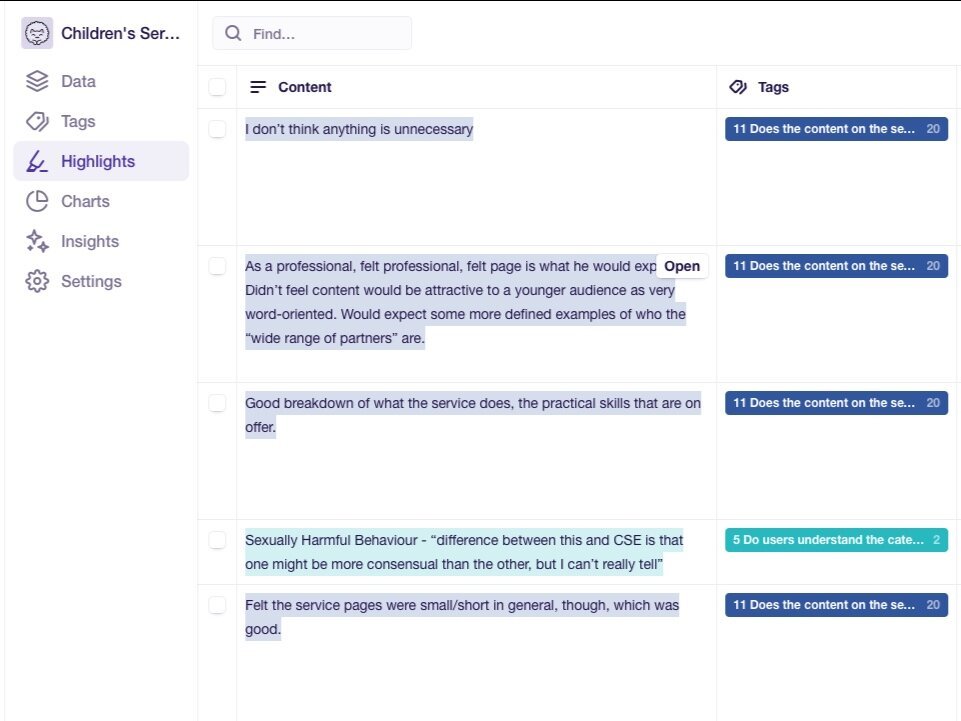Building a Barnardo’s Research Repository
User Research Client: Barnardo’sDeliverable: Research repository Aims and Objectives
As part of the transformation project at Barnardo’s the digital team were conducting a lot of research. Everything from usability studies and card sorts to extensive interviews and co-design sessions with young people. All of these activities generated findings reports which generally after the initial excitement and playback presentations subsequently end up on a shared drive never to be looked at again. This felt like a waste as there were many insights that could be applicable to other projects that were being missed and research that could be potentially duplicated. Also a great deal of time was being spent producing presentation decks for internal audiences where the researchers time was probably best spent elsewhere.
What was needed was a place where we, as researchers, could contribute to a central repository and tag our notes to allow analysis across multiple research activities saving time and unearthing insights to further our understanding of the subject.
Outcomes
A repository like this really comes into its own after its had time to bed in and there is a body of insights and findings to draw from. There were some initial teething problems managing so much data but, as a research team, we refined the way we tagged and stored our research. Being able to draw insights from across multiple projects is proving to be a useful tool to evidence and develop our design hypothesis and will only get better in time.
Approach
The high level requirements for the repository were:
A central place where individual research activities could be stored and analysed
Tagging across those activities
Way for insights to be exported in a report for stakeholders and other interested parties
We’d tried to build our own external research library in the past as part of a design sprint but that got quickly bogged down in feature creep and internal politics. This time it was decided that we should use an off the shelf product as the repository was going to be for internal use. We settled on Dovetail as it met most of our needs.
I’d been developing a hypothesis driven approach to our research and design activities for some time and Dovetail fitted this approach perfectly. By using hypotheses it gives the research a focus and framework to design the activity around. Overarching project hypotheses were developed in collaboration with the project team.
Once the activities were completed the raw notes were added to Dovetail and the researcher tagged quotes and insights using taxonomies for the project hypotheses and a more general taxonomy which could be used across projects. By using this approach we were quickly able to validate and evidence our hypothesis. As with any research project, there are always things that are found that we hadn’t thought of before so it was important to allow these findings to be added to the mix.
